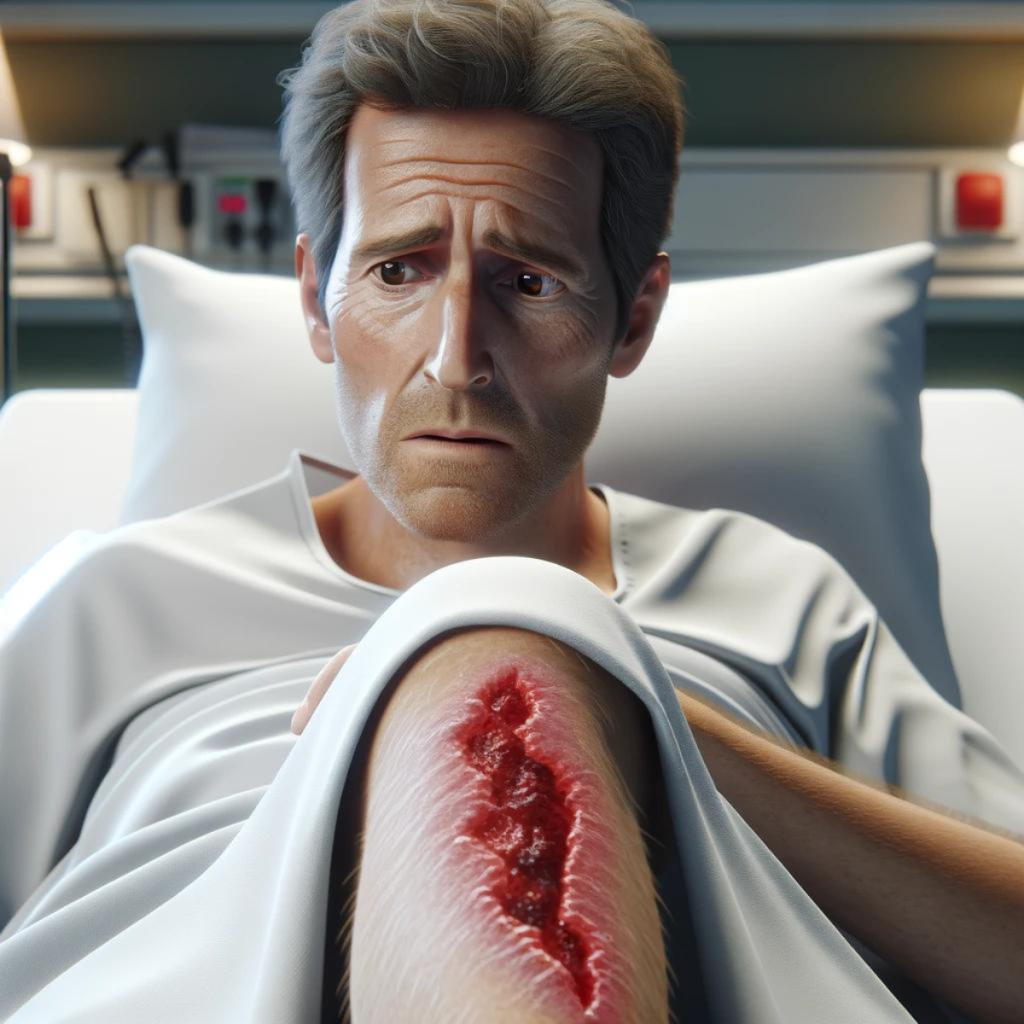
Wound healing is a complex process significantly impacted by psychological stress, particularly in hospital settings where environmental factors such as noise and the anxiety associated with medical device alarms can exacerbate stress levels. This blog explores the multifaceted relationship between stress and wound repair and discusses how hospital noise and the stress of unanswered alarms potentially delay healing.
Psychological stress is known to interfere with the body’s ability to heal wounds efficiently. Gouin and Kiecolt-Glaser (2011) highlight that stress can impair wound healing by modulating key physiological processes, including inflammatory responses and cytokine function, which are crucial for wound repair. The authors explain that stress activates the hypothalamic-pituitary-adrenal axis and the sympathetic-adrenal-medullary system, increasing levels of cortisol and catecholamines that can delay the inflammatory phase of healing necessary for successful recovery.
The typical hospital environment can contribute significantly to patient stress, particularly through noise pollution and the frequent sounding of medical device alarms. Hospitals often exceed recommended noise levels, with nighttime sound levels averaging around 49.5 dB and spikes up to 84.8 dB, far above the World Health Organization’s recommendation of 35 dB for conducive sleep environments [Ref Linder & Christian 2011]. Such conditions can disrupt patient sleep, leading to increased stress and potentially poorer healing outcomes.
Quote: “The intensities of sound and light levels required to perform necessary patient care may result in a disruptive nighttime care environment.” – Linder & Christian, 2011.
Medical device alarms are a common source of noise in hospitals. These alarms, which often signal emergencies or critical information, can contribute to stress when they are not promptly addressed. The worry that an alarm will not be answered quickly enough can heighten patient anxiety, which in turn can interfere with the wound healing process. Gouin and Kiecolt-Glaser’s review supports this, indicating that environments with high levels of noise pollution, including frequent alarms, are linked with delayed wound healing due to increased patient stress levels.
The biological pathways affected by stress include:
To combat the effects of environmental stressors in hospitals, it is crucial to:
Stress is a significant barrier to effective wound healing, with hospital noise and unmanaged alarm systems being key contributors. By understanding and mitigating these environmental stressors, healthcare providers can significantly enhance patient recovery outcomes, reduce the length of hospital stays, and improve overall patient satisfaction. The findings of Gouin and Kiecolt-Glaser underscore the need for comprehensive strategies that incorporate stress management to support the physiological processes underlying wound repair.
If you’d like to know more, please feel free to contact us. We’re always happy to chat!